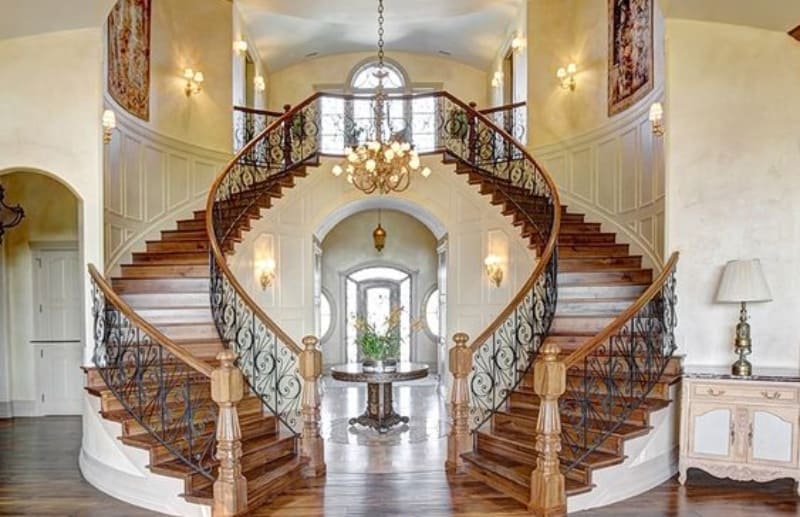The world of architecture is complex, and there is something new to learn every day. There are significant elements of building designs to incorporate, and the staircase is one of the integral parts that come to mind. It’s a feature that dictates the layout of an entire multilevel construction and comes with many perks.
There are incredible staircase designs, and picking one for your building can pose a challenge. A deeper look at this article will give you an overview of the top-notch types of staircases and guide you in selecting the best designs.
Know the Different Staircase Designs to Choose
Today, staircases have become sophisticated and provide an excellent feel to buildings. If you are thinking of adding stairs to your construction and improving its design and overall aesthetic, explore the different types out there. Here are the different types of stairs and their unique characteristics.
1. Straight Staircase
Straight stairs are one of the most widespread designs in the market and are simple and functional structures. The key feature of these stairs is that they run continually in steps from one level or floor to another. There are no turns or interruptions in the direction they move.
So, what should spur you to choose straight staircases?
- They are an excellent choice for small spaces.
- You’ll find them easy to navigate.
- They’re easy to install as they don’t require extra support structures.
- They are ideal for minimalistic projects, thanks to their simple appearance.
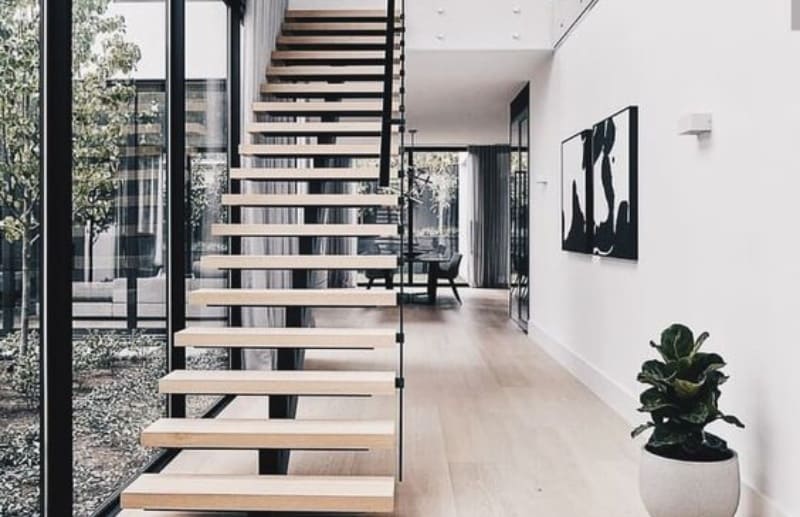
Image source: Pinterest
2. L-Shaped (90° Staircases)
If your house or office has limited floor space, worry not. The L-shaped staircase is the perfect option. The stairs move from one step to the next uninterrupted, but make a 90° turn (sharp bend) somewhere and take a different direction.
The integral features that define these staircases include the following:
- They fit nicely into corners, thanks to the unique landing platform.
- L-shaped stairs are excellent for creating extra space in buildings.
- They provide a dynamic appearance for an appealing design and add a visual barrier for enhanced privacy.
3. U-Shaped/Switchback Stairs
You’ll favor U-shaped staircases if you fancy an appealing design and type that guarantees space efficiency. Unlike L-shaped stairs, this design features a further 90-degree turn and will require two or quarter landings for sturdier support. You’ll have two flights of staircase going in opposite directions and connected by two parallel landings.
Switchback staircases are a top pick for office spaces, public venues, and emergency exits. Here are notable perks for these stair construction types:
- They guarantee extra safety as the landings provide a resting space.
- The stairs enhance the aesthetic appeal of buildings.
- They provide matchless privacy due to the barriers between the steps.
- They’re easier to access, even for people with mobility issues.
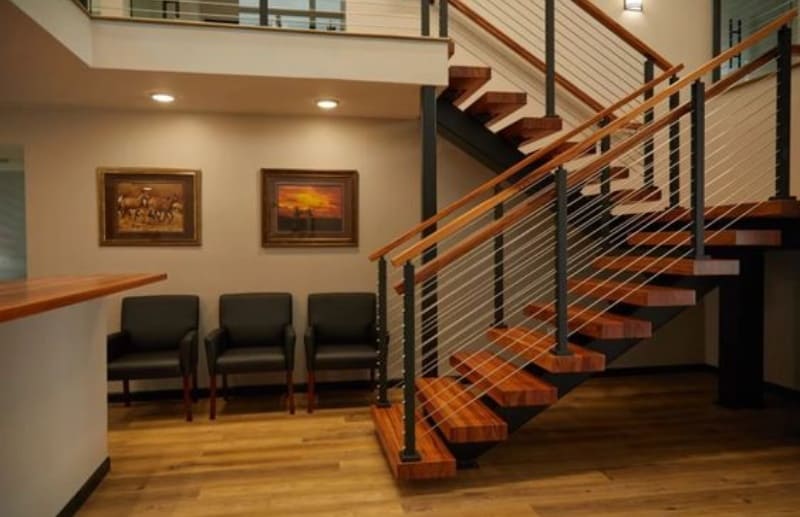
Image source: Pinterest
4. Spiral Stairs
If you like curved staircases, you’ll find spiral designs elegant and a worthwhile addition to your home or commercial property. What stands out about spiral stairs is that they make full turns continuously without any landing pillars and connect to a central point. It shouldn’t be daunting to navigate a spiral staircase.
The steps will turn around a central pole or point as you move upwards or downwards. The stairs come with railings around the spiral curve it creates, making them more noticeable. Many people choose spiral designs because:
- They are compact and perfect for small spaces.
- They are visually appealing.
- They feature a central point that provides rigid structural support.
5. Curved Stairs
Are you looking forward to installing staircases in your entryways or foyers? Curved designs make the best choice. They are akin to spiral stairs as they don’t use landing platforms. The main difference is curved designs curve slightly without making a full circle in a new direction.
These stairs are a remarkable choice for those looking to make an appealing architectural statement. They are elegant and grand designs for commercial and residential buildings and are easy to navigate, especially if they are large enough.
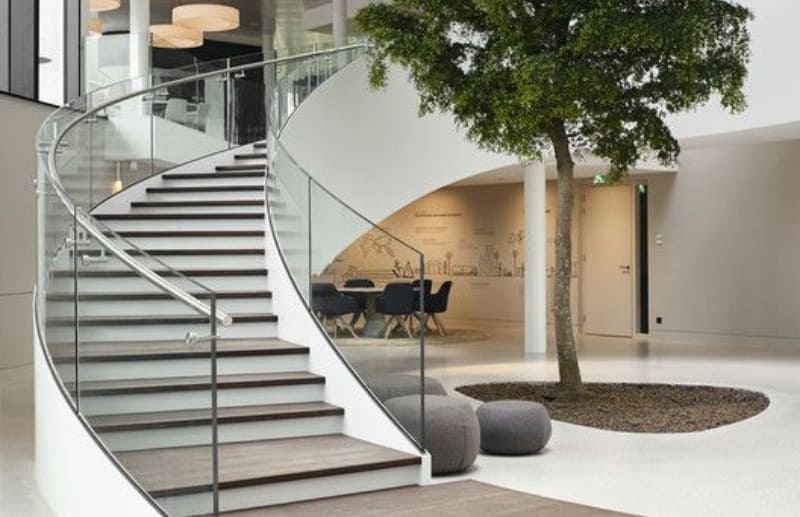
Image source: Pinterest
6. Dog-Legged Designs
You won’t go wrong by opting for dog-legged stairs. These are exceptional designs where a flight of staircases runs to a quarter-landing, then turns at a right angle and continues upwards.
The most phenomenal feature about these stair designs is that the steps are unequal and don’t have to be. They run opposite each other, and you’ll have a landing where the flight direction changes. This staircase allows a compact arrangement and flawless use of the space. In addition, they offer ample privacy, as the top floor is not visible.
7. Floating /Cantilever Stairs
The cantilever staircases are a fantastic design where the treads or solid stone flights are fixed into a supporting wall on one end. Artistically, the other end gives a floating appearance without a visible support feature. You can install these stairs indoors or outdoors and elevate their look by adding handrails or railings to improve their safety features.
Stainless steel, glass, wood, and stone are common materials used in their construction. Cantilever stairs require matchless skill sets and experience to accentuate the desired floating look. So, why are cantilevered staircases great?
- They provide more space if living in a small house.
- They add a stylish design to your décor and improve your home feel.
- The stairs are versatile, and you can get creative when installing them.
- They provide more headroom for optimal safety and movement.
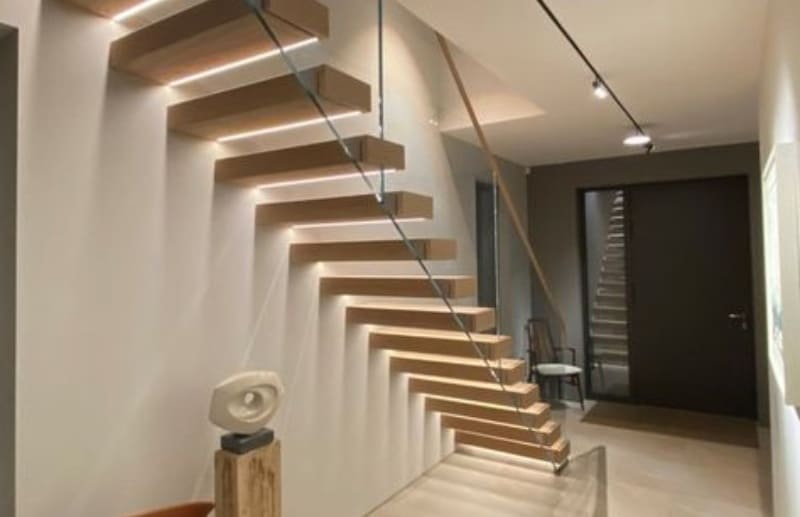
Image source: Pinterest
8. Circular Designs
As you explore the different styles of stairs, give circular designs much consideration. Here, steps branch out from a central point and are easy and comfortable to follow. The design looks more like standard stairs, and their curvature feels free and easy to descend and ascend.
Circular stairs are the go-to design because they add an inviting and open appeal to the space. They are easy to navigate and perfect for galleries, showrooms, and museums. These stairs will give your building the illusion of a vast open space and brighten your rooms by allowing more natural light.
9. Bifurcated Staircases
Feel free to include bifurcated or split stairs in your extensive list. These stairs are a great choice to create the grandest looks in your commercial and residential property. They feature an expansive set of flights that stop at a landing and are split into smaller steps facing opposite directions.
These stairs are applicable in entryways and will grasp one’s attention immediately, thanks to their welcoming appeal. The opposing steps will start from either side of the landing, making this design excellent for public buildings. Key reasons to settle for bifurcated stairs include the following:
- They are the perfect choice for interior and exterior spaces.
- They make it easy to access both sides of an extensive building.
- They make an impressive architectural design statement.
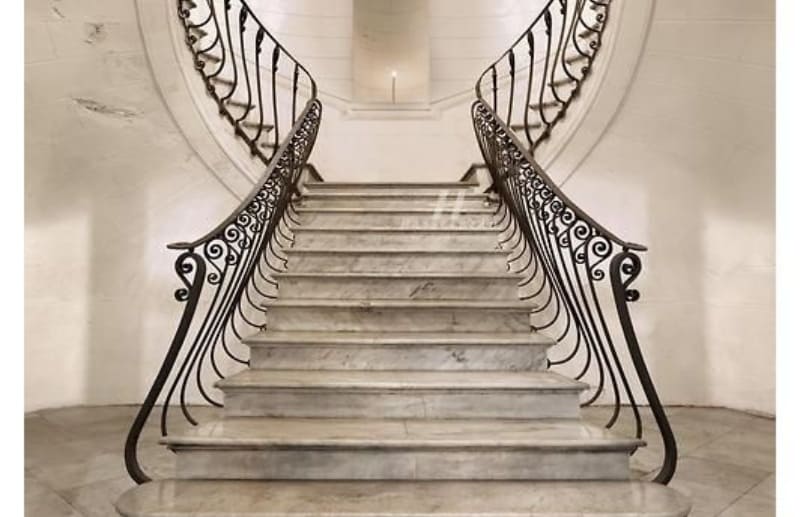
Image source: Pinterest
10. Winder Staircases
If you like L-shaped stairs, you’ll also adore winder staircases. Due to their architectural allure, they are a common addition to older and modern buildings. Winder stairs don’t have landings, but the steps are continuous and feature triangular or pie-shaped flights where the corner transitions.
This design occupies less space and is compact, ensuring the structure is durable and stable. It’s easy and comfortable to use these stairs and will give you an inviting appearance at the entryway. The seamless corner transition will provide a graceful traditional appearance.
11. Ladder /Ship Stairs
These types of staircases in building construction are excellent for tiny houses and hard-to-reach spaces. They are the standard options for docks, libraries, and lofts. Their key perks include:
- They are steep and compact enough to allow users to get from one level to another.
- Their simple design makes them cost-effective.
- They fold up easily when not in use.
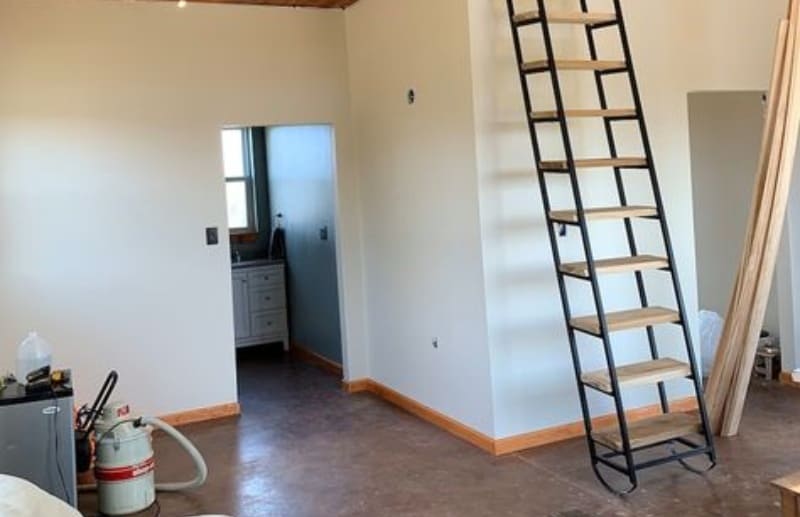
Image source: Pinterest
12. Egress Stairs
These designs are efficient for fire emergencies and escape in modern buildings. The stairs feature continuous and uninterrupted paths or steps towards the exit. They can occupy more than 500 persons and don’t have to be enclosed. However, they feature unique designs and are best constructed by experts and tested for their performance and safety.
13. Alternating Tread Stairs
When looking for a common substitute for the standard staircase design, alternating tread stairs are the best option. What makes these types of staircases in building construction unique is that they have a portion of each tread removed. Experts eliminate the unused half of the stairs to increase step depth for safety purposes and save more space. A unique characteristic of these stairs is that one step is broad on the right side, and the alternating step is broad on the left.
14. Open Newel Staircase
These stairs feature an opening between the steps, which can create room for a lift. They have visible newel poles at the flights’ start and end. Builders add winders or quarter space landing at the quarter turn of the staircase. Key advantages include:
- They add visual allure to a home; you can style up the open space to elevate your décor.
- The open space allows natural light and improves air circulation.
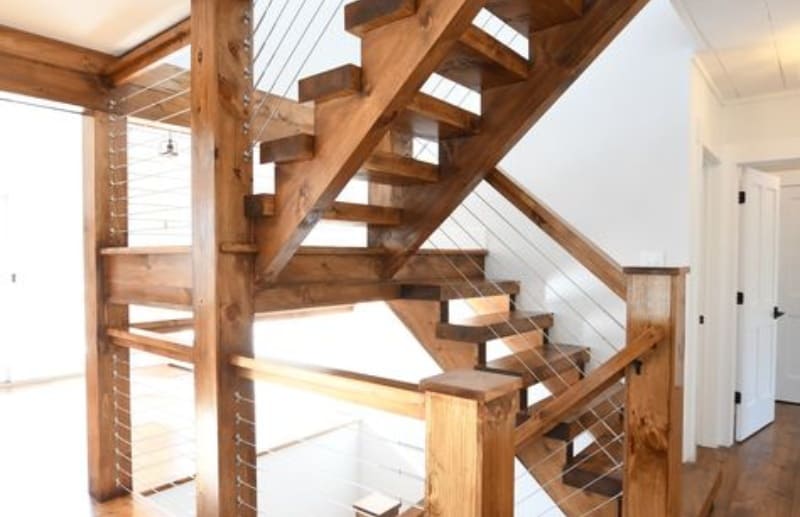
Image source: Pinterest
15. Closed Stringer Staircase
Experts embrace unique techniques to install these types of stairs. They ensure the stringers, the key components that support the risers, are sealed off on both sides. The design contributes to the improved stability of the staircase and gives the building a sleek and sophisticated look.
16. Scissor Stairs
A scissor staircase features two flights of steps that interlock but provide paths for ascending and descending. The design offers exclusive lanes of separate passageways installed within the same stairs enclosure. They are remarkable additions in apartment and condominium buildings and are used occasionally in case of an emergency. Scissor stairs are worth it because:
- They are cost-effective and utilize available space.
- They create a fantastic and distinct visual appearance.
17. Z-Shapes Staircases
Your list of different types of stairs won’t be complete without Z-shaped stairs. These alluring and specialized designs are gaining popularity and are excellent for awkward building projects. The treads follow a continuous rise of a zigzag line and have intermediate landings. Constructors will install one platform near the top floor and another near the bottom floor. These stairs guarantee easy navigation and are superb for commercial buildings.
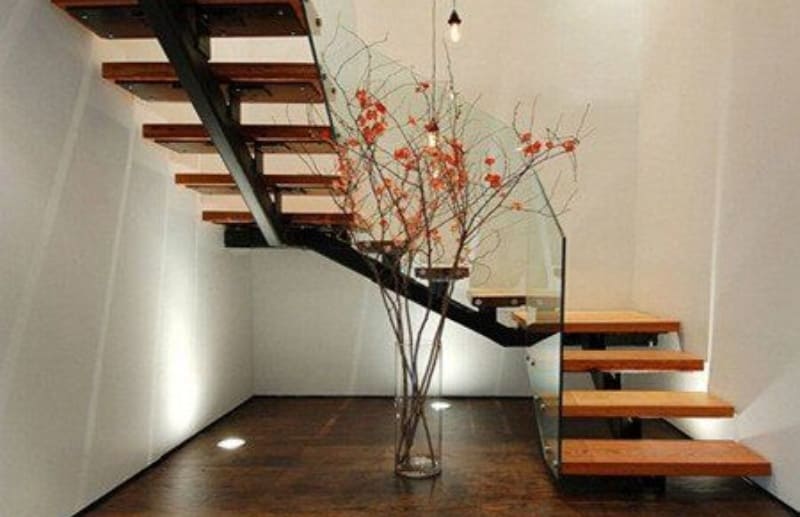
Image source: Pinterest
Settle for the Best Types of Staircases Today
Stairs are an integral style element of modern buildings, and you should pay much attention to the design you select. Here are some facets that will help you pick the best staircase design:
- Ensure the design promotes safety and guarantees accessible navigation for all.
- Settle for a design that fits your budget.
- Ensure the stairs design is a perfect fit for the available space.
- Consider the users’ lifestyles and needs when choosing a specific design.
- Select a design that allows you to abide by building codes.
With all this in mind, picking a standout staircase design for your residential or commercial building shouldn’t be intimidating or daunting. From this exclusive list, you can choose a design that attracts eyes, is safe, is easy to navigate, is unique, and will increase the value of your property. Most importantly, research, consult experts, and seek other property owners’ recommendations before settling on a staircase design.

